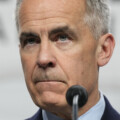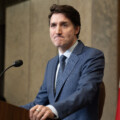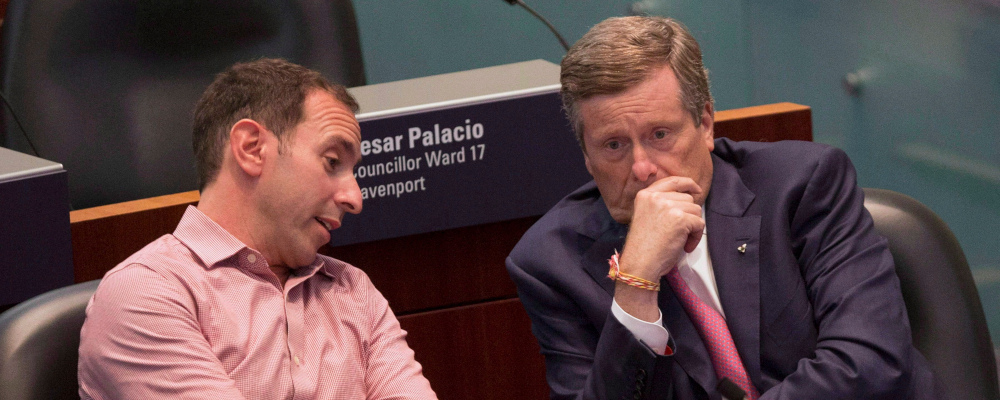Nominations closed recently for upcoming Ontario municipal elections. Uptake has been disappointing, to say the least. Many long-standing Ontario municipal politicians have either been lured into provincial politics or decided to walk away from politics altogether. Roughly one-third fewer people will run for Toronto city council than in 2018. You’d think that Toronto in particular would have no trouble attracting candidates. After all, it’s a big global city—surely there are a few people who might be interested in running the place! Alas, there is little enthusiasm for municipal government.
There are plenty of reasons why it might be hard to attract candidates. Leaving a stable job to spend a few weeks having people rake over your personal life and find any excuse to ensure that you come out of the race demoralized, unemployed, and unemployable isn’t that appealing to most normal people. It might be somewhat more attractive if it came with a competitive salary and prestige, but those aren’t part of the compensation package (Toronto city councilor salaries are in the same ballpark as TTC route supervisors and signal technicians). It also might be more attractive if the job itself wasn’t so grueling and dispiriting. None of these points are original. We know this about the job, but it’s hard to get worked up about improving the working conditions and compensation of municipal officials.
There’s another less discussed barrier: other levels of government. Municipal governments are where the rubber hits the road. They pave the streets, pick up your trash, and haul you to jail if you break the law. It’s the most visible level of government, unless you’re watching the news or scrolling through Twitter. But despite the huge, tangible role municipal governments play in our lives, voters increasingly look to provincial and federal governments to pick up the tab for these services.
Surveys of voters tend to show that traditionally municipal issues such as housing and commuting are regularly identified as important in federal and provincial elections. There are some good reasons for this. Municipal governments don’t have the tax and borrowing capacity required to finance large infrastructure projects on their own without being granted more taxing powers by the province. And municipal governments have terrible incentives when it comes to approving housing since existing residents tend to be less enthusiastic about new housing than prospective residents. So it’s not entirely surprising that voters look to other levels of government to address these issues.
The trouble is that when there is no clear responsibility for issues, it’s hard to know who to blame. So often tough decisions just don’t get made (for instance, upzoning in Toronto). Provincial and federal politicians often make promises related to housing or transportation, but they don’t really hold the bag. Municipal politicians are left with little decisionmaking power, few tools to achieve things, and a lot of blame. They’re set up to fail and under compensated. And we wonder why no one wants to do the job.
There are many things that could make municipal politics more attractive. But part of it should be giving municipal governments more control over the issues that they are well positioned to address. It might be the case that they shouldn’t have the final say over land-use policies, for instance (that’s my view). But it probably doesn’t make sense that the City of Toronto depends on the voters in North Bay and Ottawa to prioritize and finance public transportation. We’re a big, wealthy city. Surely our local government could be trusted with the financial tools to build its own subways without having to go cap in hand to Queen’s Park or Ottawa and hope that elected officials in Sudbury or Surrey view it as a priority?
For now, we’re left with atrophying local politics. City councils have long been treated like farm teams. Toronto City Council is where Jack Layton and Doug Ford got their starts, for instance. Toronto city council just lost three councilors to Queen’s Park, continuing that tradition. Say what you will about the idea that city councils should be training grounds for aspiring provincial or federal politicians. But at least they used to attract a lot of talent, even if it was just a stop along the way to Queen’s Park or Ottawa.
City councils are starting to look less like farm teams and more like those Eastern European hockey leagues where ageing pros spend their twilight years. Andrea Horwath is running for Mayor of Hamilton. Steven Del Duca is running for Mayor of Vaughan. Both Toronto and Brampton have former Progressive Conservative Party leaders as mayors. Instead of getting politicians who are climbing the ladder, we’re stuck with the ones who fell off the ladder. Instead of the Toronto Marlies, we get the Kladno Knights (no offense, Jaromir Jagr).
It’s not likely that we’ll see a quick fix. Cities are creatures of the provinces. So structural changes to fix council-level dysfunction have to come from above. Municipal politicians aren’t in control of their own fates. This was laid bare when the Ford government cut in half the number of Toronto City Council seats right before the last municipal election. Whether one supported or opposed that decision, it was a reminder that cities are indeed creatures of the provinces, subject to the whims of the premier (doubling the number of constituents per councilor does seem to have made the job worse).
It’s possible that the recent decision to grant “strong mayor” powers to mayors of large Ontario municipalities will help. It could potentially allow for more effective governance, though that remains to be seen. What might have been more helpful is if the province had decided to impose land-use reforms on the municipalities, putting an end to the carnival of horrors that is the local approvals process. Or the province could download responsibility for financing public transit systems in large municipalities, along with the taxing powers that would be required. Neither of these seems likely, though. The Province wouldn’t even let the City introduce road tolls, so it seems unlikely they’d give them any more revenue tools. And they really don’t seem to want to take ownership of tough land-use decisions. So it doesn’t seem likely that Queen’s Park will come to the rescue.
Frankly, just cutting municipal politicians bigger cheques might be the most plausible fix. Paying politicians well isn’t popular, but it’s hard to see how else you’re going to convince a private sector executive to sit through late-night city council meetings. They should also probably have bigger staff budgets. With less than $500,000 for salaries, it’s hard to see how you can attract and retain the kind of staff you need to effectively run a council office. Having enough trusted, professional staff to delegate tasks to would probably go a long way to making the job more appealing. Money isn’t everything. But it helps to have something to look forward to after a long day of getting yelled at about zoning variances and trash collection.
One thing is for sure: no one is excited about municipal elections. So instead of electing rising stars, we’ll wake up on October 25th with a collection of long-time incumbents and failed provincial politicians running Ontario’s cities. Let’s just hope they’ve got a bit of gas left in the tank. They’re going to need it for those 9 pm council meetings.
Recommended for You

Laura David: Red pill, blue pill: Google has made its opening salvo in the AI-news war. What’s Canadian media’s next move?

The Notebook by Theo Argitis: Mark Carney’s first major tests

The Weekly Wrap: Trudeau left Canada in terrible fiscal shape—and now Carney’s on clean-up duty

Ben Woodfinden: Lament for an ‘elbows up’ nation



